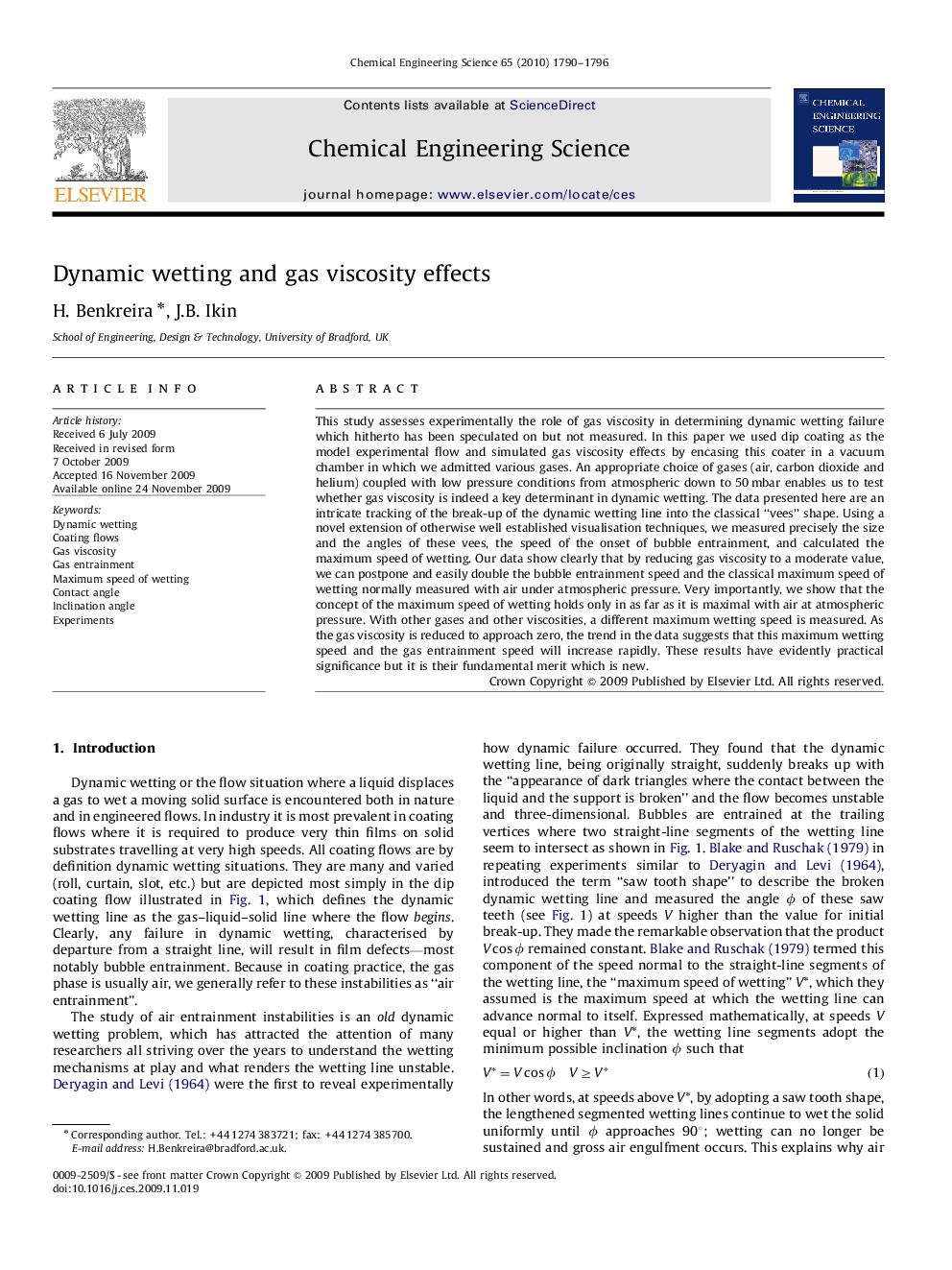| کد مقاله | کد نشریه | سال انتشار | مقاله انگلیسی | نسخه تمام متن |
|---|---|---|---|---|
| 157592 | 456977 | 2010 | 7 صفحه PDF | دانلود رایگان |

This study assesses experimentally the role of gas viscosity in determining dynamic wetting failure which hitherto has been speculated on but not measured. In this paper we used dip coating as the model experimental flow and simulated gas viscosity effects by encasing this coater in a vacuum chamber in which we admitted various gases. An appropriate choice of gases (air, carbon dioxide and helium) coupled with low pressure conditions from atmospheric down to 50 mbar enables us to test whether gas viscosity is indeed a key determinant in dynamic wetting. The data presented here are an intricate tracking of the break-up of the dynamic wetting line into the classical “vees” shape. Using a novel extension of otherwise well established visualisation techniques, we measured precisely the size and the angles of these vees, the speed of the onset of bubble entrainment, and calculated the maximum speed of wetting. Our data show clearly that by reducing gas viscosity to a moderate value, we can postpone and easily double the bubble entrainment speed and the classical maximum speed of wetting normally measured with air under atmospheric pressure. Very importantly, we show that the concept of the maximum speed of wetting holds only in as far as it is maximal with air at atmospheric pressure. With other gases and other viscosities, a different maximum wetting speed is measured. As the gas viscosity is reduced to approach zero, the trend in the data suggests that this maximum wetting speed and the gas entrainment speed will increase rapidly. These results have evidently practical significance but it is their fundamental merit which is new.
Journal: Chemical Engineering Science - Volume 65, Issue 5, 1 March 2010, Pages 1790–1796